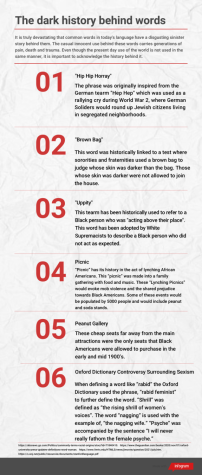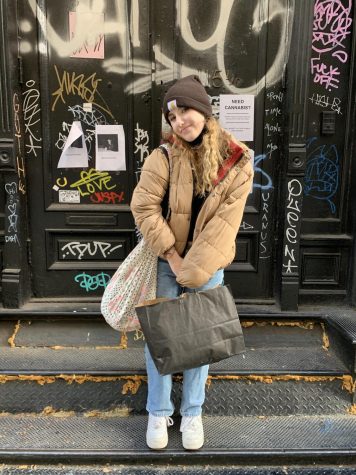The tragic narratives behind our spoken word
February 3, 2023
The historical reconstruction of words is an extensive process that has spanned across generations. As the years pass, pronunciation expands, new words are introduced and insignificant words disappear from spoken language. The meanings of words twist and reconstruct themselves as they morph into the future. Humans have had a tumultuous relationship not with just words, but with the meanings behind them.
In March 2022, Stanford University’s CIO Council and People of Color in Technology affinity group moved to eradicate racism and hostile words from Stanford’s website. The collective published its statement online, acknowledging that the website contained “language that is offensive or harmful.” This statement included a list of words that they had identified as inappropriate for professional and personal use, while sourcing alternatives.
The Elimination of Harmful Language Initiative immediately received a flood of backlash, ensuing a public relations disaster. Readers had complaints about certain words that seemed like a normal part of their vocabulary. Comedian Greg Gutfeld from Fox News added to the disapproval of the initiative.
“This is the dumbing down of society. When they start telling you what you can and cannot say, it’s time to not go to that school. It’s time to run away,” Gutfeld said.
Gutfeld’s statement resonated with many Americans who feared this was the first step to restricting free speech when instead, it just affected words on the Sanford website.
Many of the words and phrases the public mocked were seemingly normal terms; “brave” was deemed a negative stereotype of the “noble courageous savage.” Readers were encouraged not to use “killing two birds with one stone” and “beating a dead horse” as they were linked to promoting violence against animals. “American” was deemed offensive as it projected the ideology that the U.S. holds power over the Americas.
Although Stanford’s list included words that were ridiculed by the public, there lies a deeper, darker meaning behind certain words they mentioned. Stanford’s initiative had the grounds to expose and educate people on the racist definitions behind all too common words, but instead was made into a humorous example due to its inclusion of other basic terms.
Several words that are often incorporated into daily life have blatantly oppressive backgrounds in their original use. “Peanut Gallery” referred to the worst seats in theaters where many Black people were required to sit during the Vaudeville era. “Brown Bag” was historically linked to a test where sororities and fraternities used a brown bag to judge whose skin was darker than the bag. “Hip Hip Hooray” was used as a rallying cry by German soldiers when they would hunt down Jewish people in segregated neighborhoods.

Throughout history, we have seen the extreme power words carry. This impact draws a thin line and creates a heated debate over the control of words and the messages that rest beneath them.
On Jan 4, 2023, Stanford president Marc Tessier-Lavigne addressed the mounting criticism with the statement.
“Many have expressed concern that the work of this group could be used to censor or cancel a speech at Stanford, I want to assure you this is not the case,” Tessier-Lavigne said.
The casual use behind these words and many others carries generations of pain, death and trauma. Even though the present-day use of these terms is not used with the same malicious intent, it is important to acknowledge the history behind them.
Stanford could learn a lesson from the negative responses to certain words on their initiative. They might be able to understand how some crucial words got overlooked by the comical shock value of others. If Stanford used their platform to educate the public on the harmful past of words, people would be able to learn from the initiative rather than just ridicule it.
Instead of running away from the racist past of our country, it is time to accept how centuries of racism have been able to seep into our present vocabulary. By educating both the young and old on racism’s role in our language, we will not be pushing society into the past, but instead creating a new future where words have the power to unite, not divide.























